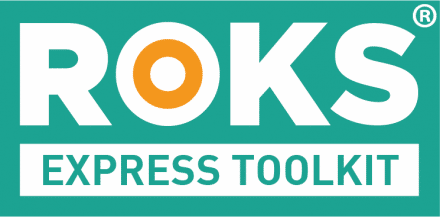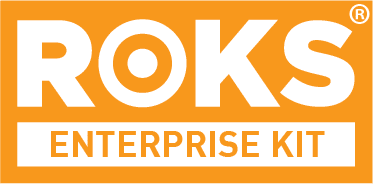The Ultimate KPI Guide: How to Develop KPIs

Welcome to the Ultimate KPI Guide. Perfect for newcomers and those seeking a refresher, this guide breaks down key performance indicator basics in everyday English. We'll show you exactly how to develop KPIs using a step-by-step system and we'll navigate through various strategies and tools to sharpen your performance measurement skills, helping you to measure what truly matters in your organisation. Ready to master the basics and beyond? Off we go.
Key Performance Indicator Basics
What does 'KPI' stand for?
KPI stands for Key Performance Indicator.
What is a KPI?
A KPI is a performance measure (sometimes referred to as a metric) quantifying something that we care about or is important in some way. If you're still unsure about what a KPI is, check out our 60 Second Explanation video.
What is the purpose of Key Performance Indicators?
The main purpose of key performance indicators is to give organisations a clear picture of how well they're doing in the areas that matter most. It's easy for a company to just plod along without really knowing if it's headed in the right direction. But by picking a few carefully chosen items to track, they can easily see if they're smashing their targets or if they need to make changes pronto.
What is the difference between a KPI, PI, Metric and Performance Measure?
Metric, measure and indicator are three different words describing the same thing: something we measure. PI stands for Performance Indicator. The words 'performance measure', 'PI', 'metric' and 'KPI' are often used interchangeably. However, a KPI is one step up from a PI only when it comes to importance.
Here are some common metrics related to finance: Net Profit, Gross Profit, Revenue. And here are some common performance measures related to digital marketing: Email Open Rate, Unsubscribe Rate, Web Sales Volume. If you'd like more metric examples and their definitions related to your specific field, check out our KPI Store.
How do we separate a PI and KPI?
Deciding whether a PI is or is not a KPI generates huge amounts of debate and strong opinions. The debate will never be settled because the importance of a measure depends on the situation it is being used in, so there can never be a definitive list of 'what is a PI and what is a KPI'.
With no centralised list of what makes a measure 'key' or not, it comes down to which measures are important to us, our organisation, or our specific situation. We must rank our measures relative to each other, with the highest ranking measures earning the title 'KPI'. This can be managed formally using the Shortlisting step from the ROKS method, which we'll get into in just a few scrolls.
What are leading and lagging indicators?
Lagging performance indicators are measures that tell you how you did, so they are backward looking. Profit is a commonly used, important lagging indicator. Leading indicators tell you how things will likely perform in the future, so they give you a chance to take action before things happen. Customer satisfaction would be a leading indicator for repeat sales.

7 Principles to Develop Effective KPIs
Before we dive into the best method to create KPIs, let's take a look at the principles those methods are based on...
That sounds like a lot to remember
If this all seems a bit overwhelming, don't worry. We have not one, but two methods that are built around these principles and which you can use to develop key performance indicators.
Generating KPIs is hard and has lots of hidden traps. That's why Bernie developed two bullet-proof step-by-step methods to help any organisation develop the right selection of indicators to achieve their strategic goals. These methods are called the ROKS Express™ and the ROKS Enterprise™ approach.
ROKS stands for Results-Orientated KPI System. This site is packed with free resources on both of these methods and this page is structured to help you navigate the material in a logical way - you might want to bookmark this page right about now!
You might be asking, 'Why are there two methods instead of one?' The answer is simple: the nature and complexity of your organisation has a big impact on the way in which you choose the metrics for your business. Bernie's methods are formulated to help SMEs as well as large, complex, or mission-based organisations.
Still not sure which approach to use?
The ROKS Express method has been built using the tools of the ROKS Enterprise method so if you aren't sure, start with the ROKS Express approach. You can always expand later with the Enterprise approach.
How to Develop KPIs for SMEs

ROKS Express: The perfect solution for small- to medium-sized commercial organisations looking to kickstart their growth. Using a simple questionnaire, this system will help get you up and running with your core indicators in hours, instead of weeks.
ROKS Express Process Overview

ROKS Express: Each step in detail
Step 1: Goals check
Knowing what you want to achieve is THE critical foundation of any well-designed KPI set. Think of it as 'deciding what DIY task you want to complete before you go to the DIY superstore'. You would have a much better idea of which tools and materials to buy if you put some thought in at the start.
- Think hard about what you want from your business and from life.
- Formulate your ‘First Draft Objectives’ and identify your ‘Key Results’.
- State what result achieving each of the objectives will deliver and record as an ‘Objective Key Result’ - OKR (Feeling hazy on the concept of OKR? Check out our intro to the OKR approach below).
- Double-check that your objectives and high-level targets are ready-to-go using the ‘Pre-flight objectives checklist’.
Step 2: Draft the 'ready to go' list of KPIs
Many businesses share common characteristics. At Made to Measure KPIs, we call these common characteristics 'traits' and when combined, they can rapidly build up a full description of the families of indicators we need for our business. Here is a sample of some of these traits...
- Staff and payroll
- Equipment investment
- Footfall
- Sensitive customer data stored
- Sales value, activity and results
- Stock
There are 52 traits in total which, when combined, can describe the vast majority of 'normal' organisations. Larger or mission-focused organisations may not have full coverage from these traits - this is where the ROKS Enterprise method would come in.
In this step we...
- Identify the ‘business traits’ that apply to your business, using a simple survey tool.
- Use the survey to select the KPI Families you need to review.
- Here are some sample KPI definitions to get you started...
- Review the relevant KPI Families to select your KPI Longlist, ready for trimming down to the essentials in Step 3.
All 413 pre-defined KPIs, with worked examples to aid understanding, are included in...
Step 2 is a great way to come up with a draft list of measures, but spoiler alert: the list will be far too long. The next step is to take that list of measures and cut it down to a much shorter list that will be practical to implement. We do this by using 'Sifting questions' followed by a scoring process called 'Shortlisting', all covered in Step 3.
Step 3: Shortlist KPIs
Now we rapidly reduce the KPI Longlist determined in Step 2 by asking ‘Sifting questions’. Then we use the KPI Shortlisting Template to score each remaining candidate KPI for Importance and Ease of Measurement. Lastly, we shortlist our measures by their individual scoring rank - you decide on your cut-off threshold and any exceptions that you may want to make.
- Use the KPI Shortlisting Template to score each candidate KPI for Importance and Ease of Measurement.
- Shortlist your KPIs by scoring rank, deciding on your cut-off threshold and any exceptions that you may want to make.
Step 4: Fine-tune your KPI definitions
Once we have a shortlist of indicators, we need to make sure these indicators are clearly and optimally 'explained' using a structured definition template and then we need to decide on targets for those indicators.
Why do we need KPI definitions?
Human language is crafted to tell stories. It does this through a rich selection of words. Many of these words overlap. Sometimes the same word can paint completely different pictures in people’s minds.
The human mind also has a fantastic ability to fill in gaps and blanks using our imagination. This ability is one reason so many people prefer the written version of a story over the film; their minds seamlessly fill in the missing details.
Now if you are a novelist, this effect is fantastic. A few well-chosen words can set off a fireworks display of imagination in the reader. If you are trying to measure something, it’s a potential disaster. We need to be precise and clear in how to calculate a metric or KPI.
- Clearly and simply tailor the definitions of the Shortlisted KPIs to your specific organisation and record other useful information, such as where the data is stored, what the known problems with the KPI are, and who the owners of the KPI and definition are.
- You may also decide to create KPI Cheat Sheets as a training aid or support tool for your team.
- Think carefully about the targets you set, the behaviours they might drive and whether you can make your targets more engaging.
- Reach agreement with those the targets will affect.
Step 5: Build your dashboards and reports
Now that you have developed your individual indicators, you need some way of presenting them for review and decision-making. The normal way of presenting indicators is by using a dashboard (a quick summary overview of the situation) or through reports (normally a more in-depth view of a situation).
Dashboards and reports come in all sorts of styles and complexities. They range from a simple print-out of some figures on a spreadsheet through to sophisticated infographics.
In the dashboard and report build step, you...
- Decide how and when you will review your measures
- Decide how you will present and review your measures
- Understand the simple rules of clear report and KPI dashboard design
- It's also recommended that you learn some tips and tricks for constructing and customising reports and dashboards if you are using Excel
Building clear, easy-to-read dashboards and reports should not be guesswork. There are clear principles of visual design which will make dashboards quick and intuitive to understand if you follow them, or cluttered and confusing if you break them. These rules are based on careful academic research by the likes of Edward Tufte, Stephen Few and many others.
Step 6: Go live
All your hard work so far will be for nothing if you don't roll out your new indicators, reports and dashboards. Roll-out doesn't just include developing a plan, we also need to think about the practicalities and problems we are likely to face. It's crucial to...
It's crucial to...
- Plan your KPI roll-out carefully
- Start collecting data
- Put your indicators into action
- Deal with the inevitable hiccups and implementation problems that will come up along the way
Why you need a KPI implementation plan
KPIs are like New Year fitness resolutions. Many of us start off with strong resolve, but quickly get sidetracked by everyday life. Breaking down the KPI roll-out process into basic steps can help you stay on track and stop you becoming overwhelmed.
How to Develop KPIs for Large, Complex or Mission-based Organisations

The ROKS Enterprise approach is for medium to large, complex, or mission-based organisations. At the heart of the approach lies KPI Trees, an incredibly powerful and flexible visual KPI creation method. The Enterprise approach is the right choice for organisations that can dedicate time and resources to the development of performance measures.
ROKS Enterprise Process Overview

ROKS Enterprise: Each step in detail
Step 1: Clear Strategy
Not having a clear business strategy (or worse still, having a strategy that is woolly or vague) will completely undermine all your work on your indicators. The good news is that there are some checks you can run to see if your strategy is fit for developing meaningful KPIs.
Agree what you are trying to achieve
- Review strategy documentation
- Identify strategic objectives
- Where and how will your measures be used?
Step 2: Engage
Experience taught me the hard way that if you don't have the right people in the room when you develop and agree your measures, you might as well have not even bothered - you will have to do it all over again. This step is all about identifying the right people to involve at the start, how to involve them, and keeping track of that involvement.
Engage stakeholders and assess situation
- Identify key stakeholders
- Develop communications plan
- Cognitive design training
- Review existing reports and dashboards
Step 3: Longlist your KPIs with KPI Trees
People tend to want to jump straight to the 'right answer' but may miss many critical measures by doing this. The ROKS method separates KPI selection into two stages. The first stage is called 'longlisting' and, by using KPI Trees, builds a full model of all the potential measures without worrying about how important or practical those measures are. This list will be waaaay too long but don't worry, we have a structured way of reducing this list in Step 4.
Build KPI Trees to produce 'longlist'
- Draft KPI Trees in stakeholder workshops
- Run follow-up results mapping workshop
- Redraft, review and sign off KPI Trees
It's really easy to get 'carried away' and to try to measure too many things. This shortlisting step offers a bullet-proof way to reduce that list to a manageable size. It also documents the 'why' for which measures we selected and which we chose to leave or implement at a later stage.
Develop the measures 'shortlist'
- Workshop an Importance/Ease-of-Measurement matrix
- Agree the 'use, aspire or discard' list
- Set up new measures
- Develop action plans for 'use' and 'aspire' lists
Step 5: Define
Definition is all about writing down some vital information about your shortlisted KPIs, such as which data is used, precise calculations, what is or is not included in the data, etc. Honestly, most organisations will do almost anything to avoid doing this step. If you skip the KPI definition step, bad things will happen. The tools provided here will help you think about, and record, all the important aspects of defining your shortlisted indicators in a clear, logical and readable way.
Define your KPIs
- Precisely define measures and indicators
- Document known issues
- Make definitions and notes freely available
Step 6: Prototype
Fully working dashboards and reports can take lots of time, money and effort to implement. Managers often change their minds when they see new reports or dashboards, upsetting their analysts and wasting huge amounts of time and effort. You can avoid this trap by creating 'mockups' of your reports, getting sign-off on fully reviewed prototypes and then building the working versions.
Design and test your dashboards and reports
- Review the prototype proposals
- Run dashboard live prototyping sessions
- Review and revise draft dashboard/report
- Approval
Step 7: Go Live
The most meticulously crafted measures and reports are meaningless until they are part of everyday life in their organisation. Rolling out measures involves fixing lots of problems and people. Fortunately, many of the issues have been solved in other organisations before, and many of those tools and strategies are outlined in this step. Typical challenges involve slow KPI production process, reporting tool selection, lack of trust in data quality, sustainability, and many other factors.
Roll out your indicators, reports and dashboards
- Get buy-in
- Deal with issues with existing data
- Map the KPI process
- Seek user feedback and tweaks during nursery period
- Hand over to 'business as usual' team
Roll-out engagement
Dealing with problems
Tools and techniques
KPI Trees: what are they and what do they do?
Have you ever felt overwhelmed trying to come up with all the key performance indicators tied to your business or project goals? It can be challenging to connect strategic objectives to measurable progress in a meaningful way. This is where KPI Trees come in handy! Invented by our very own Bernie Smith, they are arguably the fastest way to turn strategy into actionable and measurable outcomes.
Here's the official KPI Tree definition from our Ultimate KPI Tree Guide: a powerful visualisation method that allows an organisation's aspirations to be broken down into more granular results and relevant KPIs to track those results using a clear hierarchy. KPI Trees also enable you to visualise complex relationships, conflicts and interdependencies within an establishment.
Head over to our Ultimate KPI Tree Guide where we get into the nitty gritty of KPI Trees and how to build one in just seven steps.
OKRs and KPIs
Now that you're on your KPI enlightenment journey, you might have already come across something called OKRs. If you haven't, OKR stands for Objectives and Key Results and they are not to be confused with KPIs, which stands for key performance indicators. The main difference is that OKRs help set goals and plan how to track them, while KPIs are the actual measurements used to see if the goals are being met.
OKRs are phenomenal when combined with a KPI Tree and when done well, the OKR approach helps create a culture of accountability and engagement. But don't be fooled - setting effective OKRs can be tough. We've outlined all the basics of the OKR approach and an entire 10 step system to show you exactly how to create OKRs and KPIs yourself in our Complete Guide to the OKR Framework.
KPIs and Balanced Scorecard
Here's a fun fact about KPIs and Balance Scorecard: the Balanced Scorecard was the game-changer of performance measurement, offering an approach that revolutionised how organisations tracked success beyond mere numbers in the early 90s. Since then, the Balanced Scorecard approach has evolved to address certain shortcomings.
Bernie has written a great overview on how to improve performance using a Balanced Scorecard and he has a fantastic article summarising the evolution of the Balanced Scorecard over time and where it stands in performance measurement today.
Targets and Incentives
Targets and incentives are so deeply embedded in a modern society that many of us don't even notice that they are core to almost every aspect of our lives. That would be fine if our KPI targets and performance incentives worked properly, but there is plenty of evidence every time you open a news website that they often don't work very well at all.
Targets and incentives are a vital part of performance management yet many professionals and business owners simply don't have the knowledge they need to use them effectively. Until now! We've got two free resources to get you started: 10 KPI Target Problems That Kill Performance and an Ultimate Guide to Incentive Plan Design. Take your pick and let's get started.
KPI Training and Development
Did you know that Bernie offers a wide variety of KPI training and development? He caters to individuals as well as teams and organisations. Who knew you could get a certification in KPIs? It’s not just a pat on the back, but a real boost for your skillset.
Whether you’re looking to up your game at work or just really into data, getting a KPI certification can seriously level up your expertise. Curious about how it all works? Check out our Advantages of KPI Certification article on why getting certified might just be your next best move and check out the KPI Certification options we offer.
After the Ultimate KPI Guide: More Useful Material
We hope you have found this KPI guide useful. Don't forget to bookmark this page so that you can come back to it as you progress through your performance measurement journey and if you're looking for more, head to one of the links below.
Find out more
The original guide to the ROKS Enterprise method is KPI Checklists. It's available in paperback, Kindle and ePub format from Amazon and most major online book sellers.
Whilst most of the ideas you need to succeed are in the books Bernie has written, sometimes you just need some practical advice on how to apply those ideas to your organisation. A little help can give you a big boost towards your performance goals. Bernie can provide an array of KPI and improvement services to give you fresh insight and new angles to tackle your measurement and improvement problems. A quotation and situation analysis are provided in the 'Initial Review', a completely frank 60 minute phone consultation.
Here's how we do it...
Preparation: We will send you an application form, with costs and payment details for the session. Once payment is made, we will send you a preparation form by email. You can also share any materials or documents you feel will be helpful during the discussion (secure share details are included in the application form).
Timing: We will advise you of the next available consultation slot.
Qualification: Bernie has a lot of demands on his time, with only a few consulting clients accepted. If your need is outside of Bernie's' core expertise he will (gratefully) decline your application but recommend other resources to you.
Focus: These sessions are 100% focussed on delivering the best possible solution to your challenges. There's no agenda to sell further products or services to you, just the intention to deliver the best possible value.
Recording: The call will be recorded and shared with you afterwards, so there's no need to take notes and no chance of missing anything.
Satisfaction: If, within the first 15 minutes of the call, you decide that this isn't right for you, you are free to call a stop to the call - the consultation is free. After 15 mins you are committed to the whole call.
To request an application form and pricing please fill in this enquiry form...








